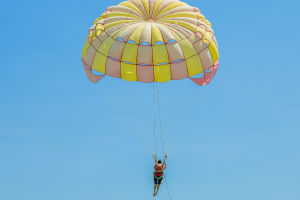Discover the Bay Bridge
The San Francisco–Oakland Bay Bridge, often overshadowed by the Golden Gate Bridge, is an engineering marvel connecting the vibrant cities of San Francisco and Oakland. For Lykkers planning a journey across this iconic structure offers sweeping views of the cityscape, the bustling energy of San Francisco.
Here’s a complete guide to help Lykkers make the most of their Bay Bridge experience, including travel tips, unique views, and interesting details about its design and history.
About the Bay Bridge
Opened in 1936, the San Francisco–Oakland Bay Bridge, commonly referred to as the Bay Bridge, spans over 8 miles and consists of two sections that meet at Yerba Buena Island. Unlike the Golden Gate Bridge, which primarily connects San Francisco with Marin County, the Bay Bridge serves as the primary commuter route linking San Francisco with the East Bay. With its double-deck structure, the bridge has long been a vital artery, carrying tens of thousands of vehicles daily.
The bridge’s most recent transformation involved a major retrofit completed in 2013, replacing the eastern span with a sleek, modern design to improve safety and durability. The eastern span, which stretches between Yerba Buena Island and Oakland, now features a striking single-tower design, making it both earthquake-resistant and aesthetically pleasing.
Essential Information for Visiting the Bay Bridge
Toll Fees : The Bay Bridge charges a toll when traveling westbound into San Francisco.
Tolls vary depending on the time and day:
Weekday Peak Hours (5 AM - 10 AM and 3 PM - 7 PM): $7
Weekday Off-Peak Hours: $5
Weekends: $6 Payments are generally made electronically through FasTrak or via license plate recognition systems. No tolls are charged when traveling eastbound toward Oakland.
Best Times to Visit : Traffic on the Bay Bridge can be heavy, especially during rush hours. To enjoy a smooth drive and clearer views, it’s best to visit outside of peak hours, such as late morning or early afternoon on weekdays. Sunset offers a magical view as the city lights come alive, with reflections dancing on the water.
Public Transportation Options : For those looking to avoid the traffic and tolls, BART (Bay Area Rapid Transit) offers an efficient alternative. BART trains run beneath the bay through the Transbay Tube, connecting San Francisco and Oakland in just 12 minutes, with ticket prices averaging around $4.40 one-way. Alternatively, ferries from Oakland and Alameda provide a scenic option, with one-way fares ranging from $4 to $8.
Must-Visit Spots for Bay Bridge Views
Yerba Buena Island Lookout : Located midway on the Bay Bridge, Yerba Buena Island offers a fantastic vantage point for panoramic views of the bridge, San Francisco, and Oakland. It’s a great spot for photography, especially during sunset when the city is bathed in warm hues. There’s a small parking area, and pedestrian access is available for those wanting to explore the island’s trails.
Embarcadero Waterfront : For Lykkers who prefer a city-based view, head to the Embarcadero waterfront in San Francisco. Here, you can capture stunning images of the Bay Bridge against the backdrop of the city skyline, particularly from Pier 14 and the Ferry Building. In the evenings, the bridge’s LED light display, known as "The Bay Lights," illuminates the structure with mesmerizing patterns.
Treasure Island : Just a short drive or bus ride from downtown San Francisco, Treasure Island provides one of the best views of the Bay Bridge and the San Francisco skyline. With picnic spots and photo opportunities aplenty, it’s a popular spot for locals and tourists alike. Parking is available, and the views are especially captivating at dusk.
Interesting Facts about the Bay Bridge
The Bay Lights : In 2013, artist Leo Villareal installed a massive LED art display on the western span of the Bay Bridge. Known as "The Bay Lights," this installation consists of 25,000 LED lights that create changing patterns from dusk to dawn. The lights are best viewed from the Embarcadero or Treasure Island and add a unique artistic touch to the bridge’s nighttime presence.
Double-Deck Design : The Bay Bridge features a double-deck design with the top deck designated for westbound traffic and the lower deck for eastbound traffic. Originally, the lower deck also accommodated railway lines, which were removed in the 1950s to expand vehicle lanes.
Engineering Feat : The eastern span, completed in 2013, is the longest self-anchored suspension bridge in the world. The design allows it to withstand powerful earthquakes, a critical feature given California’s seismic activity.
Summing up
The San Francisco–Oakland Bay Bridge is more than just a route between two cities; it’s a dynamic, architecturally impressive landmark with rich history and breathtaking views. For Lykkers, a visit to the Bay Bridge offers an opportunity to experience the vibrant heart of the Bay Area, from its iconic LED lights to panoramic viewpoints. Whether driving across, taking a ferry beneath, or photographing its skyline view, the Bay Bridge promises a memorable addition to any San Francisco trip.


